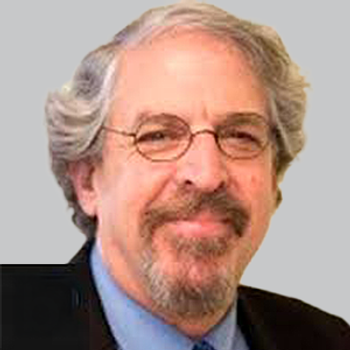
NeuroVoices: Shazam Hussain, MD, FRCP, FAHA, on Weighing Direct to Angio Approaches for Mobile Stroke Units
The director of Cleveland Clinic’s Cerebrovascular Center provided clinical perspective on the treatment decisions mobile stroke units face, and whether directly transferring patients to angiography suite is necessary.
Reducing the time from last known well to recanalization are associated with better functional outcomes and lower mortality in ischemic stroke. At the
Led by
Following the conclusion of the conference, NeurologyLive® sat down with Hussain to get commentary on the significance of the results. Hussain, director of Cleveland Clinic’s Cerebrovascular Center, spoke on nuances of mobile stroke units, and how there are still aspects of care clinicians are figuring out. As part of a new iteration of
NeurologyLive®: What do we currently know about the advantages or maybe even disadvantages to bring patients directly to angiography?
Shazam Hussain, MD, FRCP, FAHA: Overall, there’s a nice body of work that's developing on this subject. Similar to IV thrombolysis, we know how important “time is brain,” and we know how important giving those drugs as fast as possible is, which is very similar thrombectomy. We know that the faster that we can get patients to an angio suite and get that clot or blood vessel opened up, usually that translates into better outcomes. Optimizing those systems is the key and an important feature here. In general, compared to our traditional systems where patients go into the closest hospital, they get evaluated, and then potentially get transferred into another facility, the utilization of a mobile stroke in that kind of scenario, will decrease your time to treatment so much.
Now, we're getting into the nuances of what these exact workflows look like. For example, in this particular study, is it about rapidly getting there as fast as possible? Or are there some additional steps that we need to decide about to optimize that patient's care. It’s interesting work. We've seen with the Barcelona group, for example, their RACECAT study, they were able to get patients directly to angio and show improved outcomes. Other interesting mobile stroke data from the BEST-MSU study presented at ISC from the Houston group, showed that those patients who are getting that thrombolysis on the truck are getting recanalization early. It's exciting time to understand how these mobile stroke units fit into the big picture.
What are the biggest takeaways the clinical community has to these findings?
With these mobile stroke units, we've shown decreasing time to treatment, improving outcomes. Now, the cost effectiveness analyses are coming out as well. The place of mobile stroke is here. We'll see about reimbursement; I think that's a whole other question. I think we're really getting into the nuances—as we are in many areas within stroke—about how to optimize things for individual patients. It’s an exciting time, I think we're seeing a lot of interesting studies that are trying to understand these workflows. What are the little adjustments and tweaks that we need to make to understand how to optimize those workflows to get the patients that the best chance at a good outcome? In what can be a devastating situation.
Are there certain types of poststroke patients who may benefit more from mobile stroke units?
Given that that strong link between time and treatment in general, we're seeing that patients on mobile stroke are doing much better than through traditional systems. The ability to have a well trained crew on the vehicle, the ability to get that physician presence—in our case we use via telemedicine—which I think gives you that expert eye on the situation. That'll allow us to make sure, especially those with severe strokes, that we're getting them to the right center the first time, which is really valuable in terms of routing. I think technology is going to help us as well. The CT scanner that we're using on the vehicle is the same scanner that was built for portable CT scanning in hospitals. We're now getting the development of next generation equipment that are going to be designed more specifically for mobile stroke unit. With that, I think if we can get to the ability to scan down into the neck region, that would be a good opportunity from a technological advancement stand point to have all the information you need to then go direct to angio. Our dataset has shown that those with tandem occlusion are the more complicated ones to deal with.
Are there specific areas you’d like to see growth in the future?
It’s been an excellent program for us. We see worldwide more and more places are adopting the idea of inputting and having a mobile stroke unit now that we’ve had excellent studies out of Berlin and Houston that have proven the outcome benefit. From a guidelines perspective, we'll see if we adopt new guidelines or use the ESL guidelines, for example, which have promoted a very high rating for mobile stroke units, which is really important. reimbursement, of course, as with anything, you have to be able to invest in a program like this. Reimbursement becomes an important part of making sure these have long term success. Through Presto, which is a worldwide organization created to help advance mobile stroke care, we’re hoping that our discussions with CMS will be fruitful, and we’ll be able to get this important paradigm of treatment reimbursed so that we can see the proliferation of these kinds of units for the betterment of patients.
Transcript edited for clarity.
REFERENCES
1. Martucci M, Toth G, Buletko A, Khawaja Z, Russman AN, Hussain MS. Mobile stroke unit: direct to angio or some stops along the way? Presented at: 2023 International Stroke Conference; February 8-10; Dallas, TX. Abstract WMP85
Newsletter
Keep your finger on the pulse of neurology—subscribe to NeurologyLive for expert interviews, new data, and breakthrough treatment updates.


































